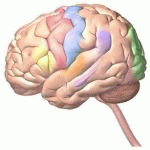Neurology
|
28 march 2015 05:51:54 |
| Efficacy and safety of conversion to monotherapy with eslicarbazepine acetate in adults with uncontrolled partial-onset seizures: a historical-control phase III study (BMC Neurology) |
|
Tweet Background:
Eslicarbazepine acetate (ESL, Aptiom®) is a once-daily (QD) anticonvulsant, approved as adjunctive treatment of partial-onset seizures (POS). It is extensively converted after oral administration to eslicarbazepine, and is believed to exert its effect through inhibition of voltage-gated sodium channels. The possible role of ESL as monotherapy to treat POS has not yet been established.
Methods:
This study was an 18-week, multicenter, randomized double-blind trial of gradual conversion to ESL monotherapy in adults with POS not well controlled by 1–2 antiepileptic drugs (AEDs), using historical data as the control. The study comprised an 8-week baseline period, a 2-week titration period, a 6-week AED conversion period, a 10-week monotherapy period, and either a 1-week taper period or optional item to an open-label extension study. The primary endpoint compared the Kaplan–Meier (KM)-estimated 112-day exit rate with a threshold value calculated from the historical controls.
Results:
There were 172 randomized patients; 154 (90%) entered the AED conversion period and 121 (70%) completed the study. The KM-estimated exit rates [confidence interval (CI)] were 15.6% [8.1–28.7%] for ESL 1200 mg, and 12.8% [7.5–21.5%] for ESL 1600 mg. The upper limits of the 95% CI KM-estimates were below the pre-specified threshold for historical control of 65.3%, indicating that ESL was efficacious in reducing seizure-related exits, compared with historical control. During the 18-week double-blind treatment period, median reductions in standardized seizure frequency occurred with ESL 1200 mg (36.1%) and ESL 1600 mg (47.5%). The responder rates (a 50% or greater reduction in seizure frequency from baseline) during the 18-week double-blind period and the monotherapy period, respectively, were 35.2% and 38.9% for ESL 1200 mg, and 46.0% and 46.0% for ESL 1600 mg. The overall adverse event profile was consistent with the known safety profile of ESL.
Conclusions:
These findings indicate that ESL monotherapy (1200 and 1600 mg QD) was efficacious and well tolerated in this study.Trial registrationNCT01091662; EudraCT No. 2010-018684-42. |
| 102 viewsCategory: Neurology |
 The lateral parabrachial nucleus is actively involved in the acquisition of fear memory in mice (Molecular Brain) The lateral parabrachial nucleus is actively involved in the acquisition of fear memory in mice (Molecular Brain)Inflammatory mediator release from primary rhesus microglia in response to Borrelia burgdorferi results from the activation of several receptors and pathways (Journal of Neuroinflammation) 
|
| blog comments powered by Disqus |
MyJournals.org
The latest issues of all your favorite science journals on one page
The latest issues of all your favorite science journals on one page



